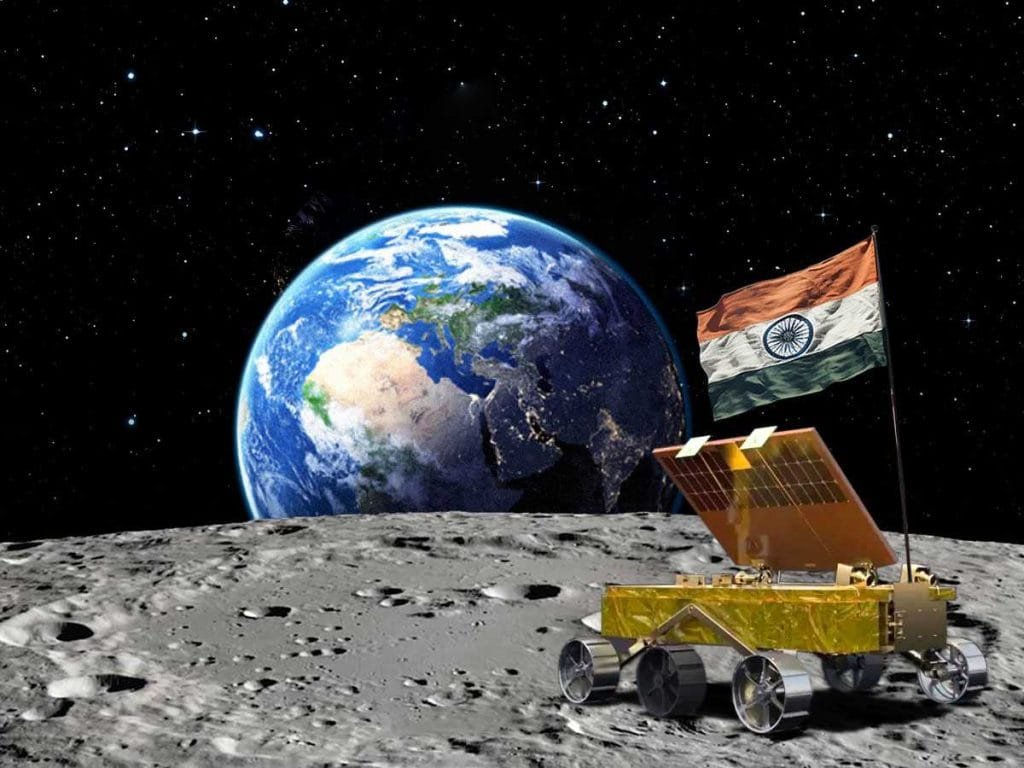Chandrayaan-3 Lunar Mission
Chandrayaan-3 Controversy: A prominent Chinese cosmochemist, Ouyang Ziyuan, has stirred controversy by disputing India’s historic achievement in lunar exploration. He claims that India’s Chandrayaan-3 mission did not successfully land on the Moon’s south pole, challenging widely accepted views in the scientific community.
Differing Interpretations of the Moon’s South Pole

Ouyang’s assertion is rooted in a difference in the interpretation of the Moon’s south pole. On Earth, the southern pole is defined as the region between 66.5 and 90 degrees south. This is considering Earth’s axial tilt of approximately 23.5 degrees. However, Ouyang argues that the Moon’s tilt is only 1.5 degrees, resulting in a considerably smaller polar region.
Check Out: BJP's Second List for Madhya Pradesh Elections Includes Three Union MinistersNASA defines the Moon’s South Pole as an area between 80 to 90 degrees. Ouyang, on the other hand, narrows it down further to 88.5 to 90 degrees. This variance in interpretation leads to the core of the controversy.
Chinese Scientist’s Claims vs. Accepted Facts
Ouyang’s claim challenges the widely accepted facts regarding Chandrayaan-3’s lunar landing. His statement questions not only the success of the mission but also the landing site, suggesting that it did not occur at or near the lunar south pole. This assertion contradicts the clear information provided by the Indian Space Research Organisation (ISRO) and acknowledged by space agencies worldwide.
Despite Ouyang’s provocative statements, his claims have been met with skepticism by the global scientific community. NASA and the European Space Agency, among others, have lauded ISRO’s achievement and validated the landing’s accuracy near the Moon’s south pole. India itself has consistently maintained that Chandrayaan-3 would land at approximately 70 degrees latitude, which is indeed within the region considered near the south pole.
Check Out: PM Modi's Mega Rally in Bhopal: 10 Lakh Expected to Join 'Karyakarta MahakumbhRebuttal by a Chinese Scientist
A scientist from Hong Kong University’s Laboratory for Space Research, Quentin Parker, has refuted Ouyang’s unfounded assertions. Parker emphasized that successfully landing a rover near the South Pole, within the broadly defined South Pole region, represents a remarkable accomplishment. He asserted that India’s achievement should not be undermined or questioned based on the size of the defined polar region.
“The moment you land a rover close to the south pole and certainly within what’s defined as the south pole region is already a major achievement,” Quentin Parker, director of Hong Kong University’s Laboratory for Space Research, told the South China Morning Post.
Ouyang Ziyuan
“I think that nothing should be taken away from India because of that.”
Ouyang Ziyuan’s comments have sparked controversy. The scientific consensus and official statements from space agencies support India’s successful lunar landing. The integrity of Chandrayaan-3’s historic achievement in exploring the Moon’s south pole remains intact.
